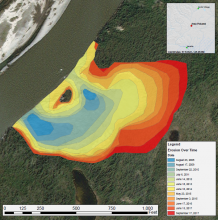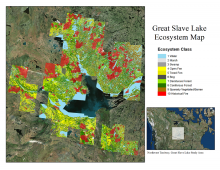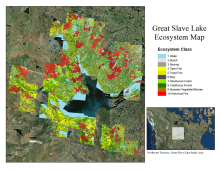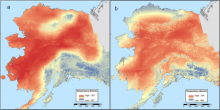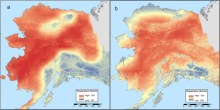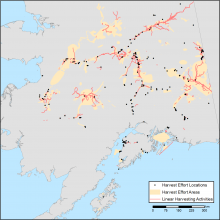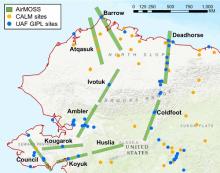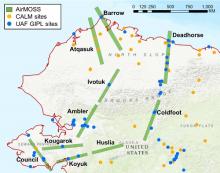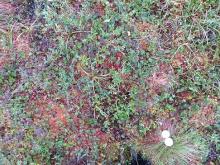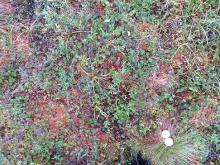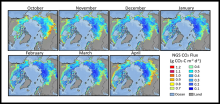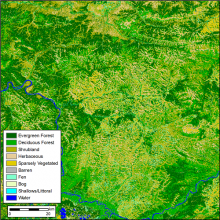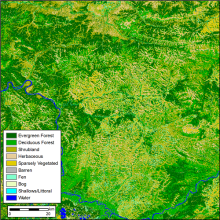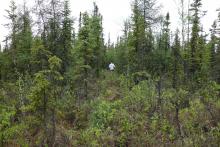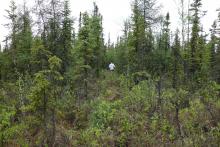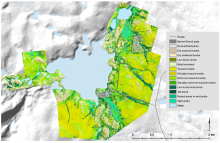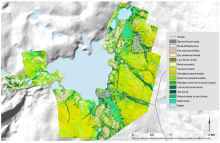A time series of Landsat-derived maps shows the expansion of a thaw slump in Alaska.
Thaw Slump Expansion in Alaska
Annual expansion of a thaw slump on the East Fork Chandalar River near the community of Venetie, Alaska, from 2008 through 2017. The erosion time series was created by digitizing data from ESRI base maps and Landsat 5, 7, and 8 images. The eroded area appears to be growing steadily, mostly to the east, with apparent limitation on growth to the north and south.

